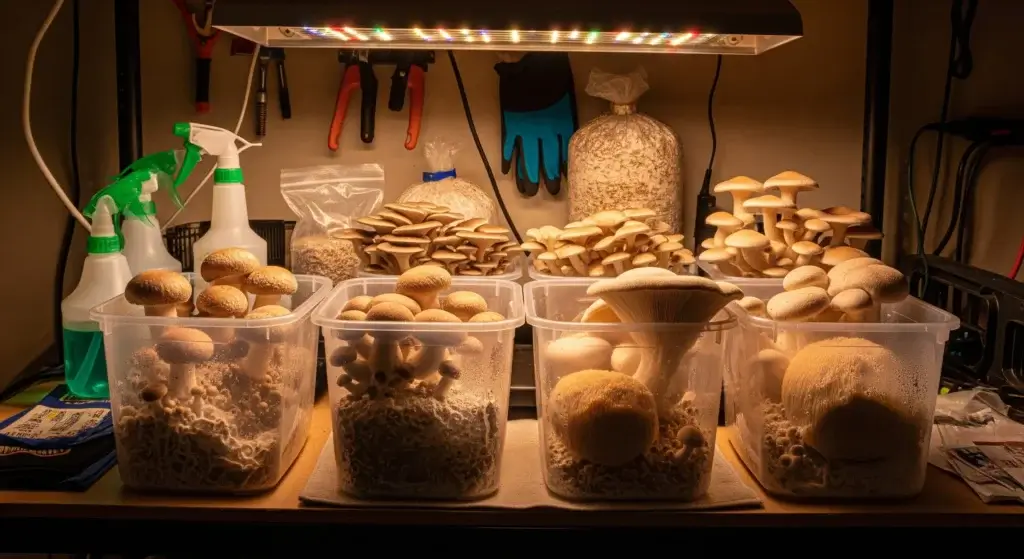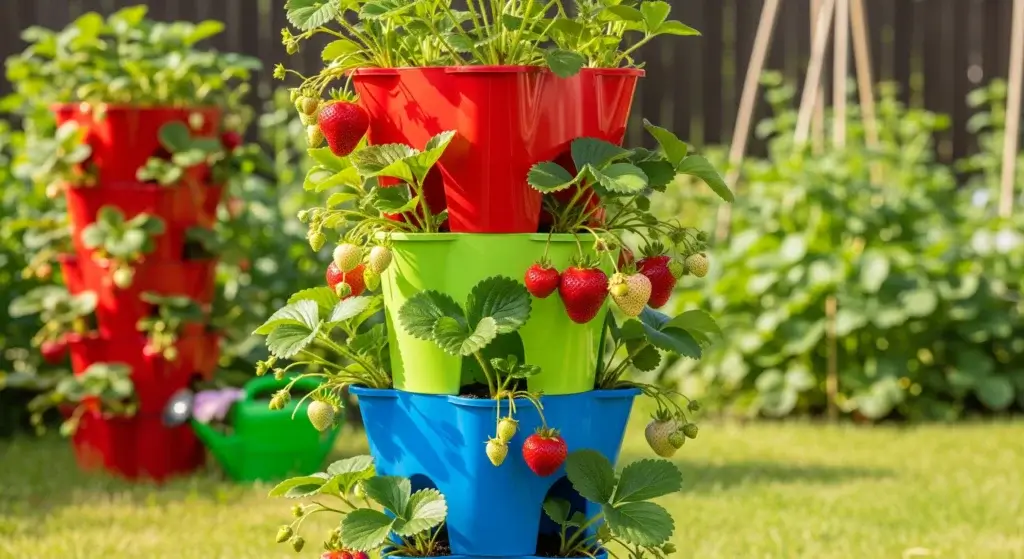
Weeds can be a significant challenge for gardeners, consuming valuable resources and competing with desired plants for water, nutrients, and sunlight.
Traditional methods of weed control often rely on chemical herbicides, which can harm the environment and pose health risks.
Fortunately, there are effective and eco-friendly DIY natural weed control methods that can be used to maintain a weed-free garden.
In this blog post, we will explore the benefits of natural weed control and provide a comprehensive guide to DIY methods, including homemade sprays, smothering techniques, and manual removal.
Benefits of Natural Weed Control
There are several benefits to using natural weed control methods in your garden instead of chemical herbicides:
Safer for your garden and the environment
Choosing natural weed control methods over chemical herbicides prioritizes the well-being of your garden and the environment.
Chemical herbicides can inadvertently harm beneficial plants, insects like ladybugs, and vital pollinators.
Moreover, they pose risks of contaminating water sources through runoff.
Opting for natural methods ensures a safer and healthier ecosystem in your garden, nurturing a thriving habitat for all its inhabitants.
- Read also: Effective DIY Traps for Garden Pests
- Read also: A DIY Guide to Spider Mite Spray
Promotes healthy soil
Natural weed control techniques such as mulching and composting not only suppress weed growth but also enhance soil health and fertility.
By enriching the soil with organic matter, these methods create an optimal environment for your desired plants to flourish.
Healthy soil nurtures stronger, more resilient plants that naturally outcompete weeds, reducing the need for intervention.
Cost-effective solutions
Natural weed control methods offer a cost-effective alternative to purchasing chemical herbicides.
Many of these methods utilize common household items or involve simple techniques like hand-pulling, making them accessible to all gardeners regardless of budget.
By embracing natural solutions, you can effectively manage weeds without breaking the bank, freeing up resources for other aspects of your garden.
Sustainable gardening
By adopting natural weed control practices, you contribute to a more sustainable approach to gardening.
Avoiding the use of harmful chemicals minimizes the environmental impact and fosters a healthier ecosystem.
Natural methods align with principles of sustainability, promoting harmony between your garden and the surrounding environment for long-term vitality.
Greater satisfaction
Controlling weeds through natural methods offers a sense of fulfillment and satisfaction that comes from nurturing your garden with your own hands.
The process of hand-pulling weeds or implementing organic solutions fosters a deeper connection to your garden and its ecosystem.
Witnessing the fruits of your labor as your garden thrives in a weed-free environment is immensely rewarding and gratifying.

DIY Natural Weed Control Methods
DIY natural weed control methods offer a cost-effective and environmentally friendly alternative to traditional chemical methods.
These methods involve using household items and natural substances to kill weeds without harming the environment.
Here are some of the most effective DIY natural weed control methods:
Vinegar solution
Craft a powerful weed-fighting potion by blending 1 gallon of white vinegar with 1 cup of salt and 1 tablespoon of liquid dish soap.
This natural elixir targets weeds with its acidic punch, breaking down their defenses and leading to their demise.
Use a spray bottle to apply the solution directly onto pesky weeds, focusing on young plants for optimal results.
For tougher foes, a repeat application ensures thorough eradication without harming your garden’s delicate balance.
Boiling water
Harness the energy of boiling water to tackle weeds lurking in hard-to-reach places like cracks and crevices.
Simply heat water in your kettle or pot until it reaches a rolling boil, then carefully pour it over the unwanted invaders.
Exercise care to avoid splashing nearby plants, as the scalding water swiftly puts an end to weed growth.
This method offers immediate relief, leaving your garden looking tidy and rejuvenated.
Baking soda
Baking soda serves as a natural desiccant, effectively drying out weeds and causing them to wither away.
To utilize this method, simply sprinkle baking soda over the targeted weeds and water it in thoroughly.
The baking soda absorbs moisture from the plants, depriving them of vital hydration and ultimately leading to their demise.
This approach is particularly effective for weeds growing in areas where other methods may prove challenging.

Salt
Harness the power of salt to dehydrate and eliminate stubborn weeds.
Sprinkle salt directly onto the weeds and ensure thorough watering to activate its effects.
The salt works by drawing moisture from the plants, causing them to wilt and perish over time.
Exercise caution when using salt, as it can adversely affect soil health if overused. This method is ideal for combating weeds in areas where conventional methods may fall short.
Mulching
Embrace the natural benefits of mulching to suppress weed growth and nurture a healthier garden environment.
Apply a layer of organic mulch, such as wood chips or straw, to the soil surface to inhibit weed germination and growth.
Mulch serves as a protective barrier, blocking sunlight and preventing weed seeds from taking root.
Additionally, it helps retain soil moisture and regulate temperature, creating optimal conditions for desired plants to thrive.
Landscape fabric
Landscape fabric serves as a physical barrier to prevent weeds from taking root and thriving in your garden.
It’s particularly handy in areas where other methods struggle to keep weeds at bay, such as around shrubs or trees.
By laying down landscape fabric and covering it with mulch or other materials, you create a formidable defense against unwanted vegetation, ensuring your garden stays tidy and weed-free.
Propane torch
Harness the power of fire with a propane torch to target weeds in hard-to-reach places or dense vegetation.
This tool offers precision weed control, making it ideal for areas where traditional methods may fall short, such as around rocks or in tight spaces.
Exercise caution to avoid damaging nearby plants, as the intense heat can inadvertently harm surrounding vegetation.
Corn gluten meal
Corn gluten meal serves as a natural herbicide, inhibiting the growth of weed seeds and preventing them from germinating.
It’s a versatile option for areas where traditional methods may not suffice, such as lawns or gardens.
By incorporating corn gluten meal into your soil, you create a hostile environment for weed seeds, effectively halting their growth before it starts.
Manual weeding
Sometimes, the simplest solution is the most effective. Manual weeding involves physically removing weeds from the soil, root and all, to prevent regrowth.
This hands-on approach is particularly useful for small areas or for targeting weeds that are nestled among desired plants.
Take care to remove the entire root system to ensure thorough eradication and prevent future infestations.
Edging
Create clear boundaries and prevent weeds from encroaching beyond designated areas with edging.
This method involves installing a physical barrier, such as plastic or metal edging, to delineate paths, driveways, or garden beds.
Alternatively, you can plant a border of weed-resistant plants to serve as a natural barrier against unwanted vegetation.
Edging offers a simple yet effective way to maintain a neat and tidy garden landscape, free from the intrusion of weeds.

How to Choose the Right Method
Selecting the most suitable weed control method for your garden requires careful consideration of several factors. These include:
Type of weed
Identifying the type of weed plaguing your garden is the first step in determining the most appropriate control method.
Different weeds may require different approaches for effective eradication.
For example, broadleaf weeds may respond better to herbicidal sprays, while grassy weeds may require manual pulling or digging.
Severity of infestation
Assessing the extent of weed infestation is crucial in choosing the right control method.
For minor or isolated weed outbreaks, manual methods such as hand-pulling or spot-treating with natural remedies may suffice.
However, for more widespread infestations, a more systematic approach, such as using landscape fabric or applying herbicidal treatments, may be necessary to achieve comprehensive control.
Time and effort
Consider the amount of time and effort you are willing to invest in weed control when selecting a method.
Some techniques, such as manual weeding or applying natural remedies, may be labor-intensive but offer the satisfaction of hands-on involvement.
Alternatively, using landscape fabric or employing mechanical tools like propane torches may require less ongoing maintenance but may involve initial setup or equipment costs.
Aesthetics
Maintaining the aesthetic appeal of your garden is essential when choosing a weed control method.
Some techniques, such as mulching or edging, not only suppress weed growth but also enhance the visual appeal of your landscape.
Consider how each method will impact the overall look and feel of your garden.
For example, landscape fabric may provide effective weed control but may detract from the natural beauty of your garden if not covered with mulch or decorative materials.

- Read also: Safe Indoor Plant Insect Sprays
- Read also: DIY Plant Food for Vegetables
Conclusion
DIY natural weed control methods offer a cost-effective and environmentally friendly alternative to traditional chemical methods.
By understanding the benefits of natural weed control and exploring the various DIY methods available, gardeners can maintain a weed-free garden while promoting a healthier ecosystem.



